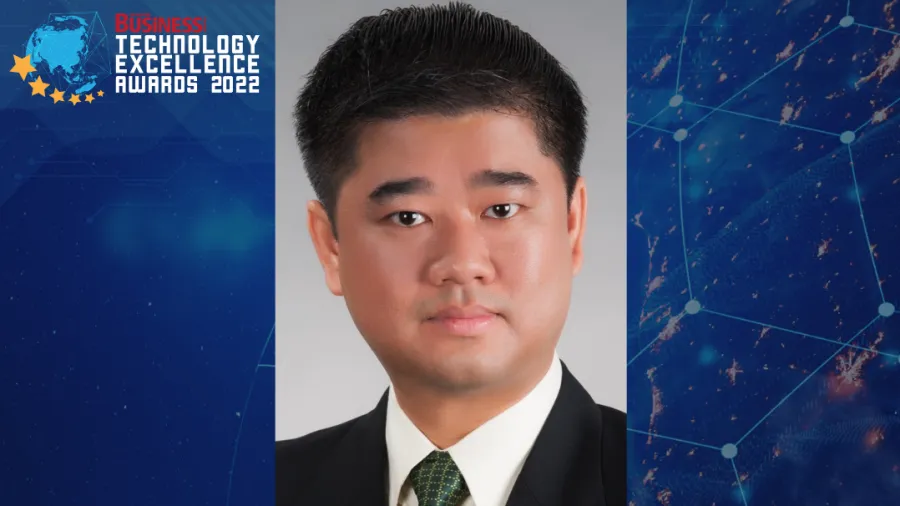
Cyber security plagued by tighter regulations, higher spending, more data breaches
Meanwhile, consumer sectors lead in digital adoption, says EY exec.
Wai Keat Cheang is a consulting partner at EY Singapore, having vast experience in providing business and technology consulting services to local and multinational corporations in the private and public sectors across the Asia-Pacific.
Wai Keat covers agile business transformation, post-merger integration, and end-to-end managed services consultation for IT and business processes for life sciences, health care, consumer goods, agribusiness, transportation, and real estate clients.
As a judge in Singapore Business Review’s Technology Excellence Awards 2022, Wai Keat shares thoughts on how technology professionals must upskill if they aspire to a consulting role, as well as his observations on challenges facing the IT industry.
Having graduated from a technology-related course, what led you toward a career in consulting? What do you think is the best part of your work?
A career in technology consulting provides one with the opportunity to make a difference and significant impact on businesses and governments in using technological solutions to address business problems and help organisations transform. This is a role that continually sharpens your edge as you will work with smart and motivated talents, and also provides exposure to the forefront of technological developments and evolution of emerging technologies, particularly in Digital, AI, Cloud, Analytics, IoT, etc. There is never a dull moment as every project is different and you can gain in-depth knowledge of multiple different industries and functions. Starting in consulting is the quickest way to build lifelong hard skills and soft skills that are invaluable for business executives.
Based on your experience, what are the most important character traits and values that aspiring technology consultants must cultivate?
As technology evolves from being an enabler of the business to the lifeblood of the business, the role of the modern CIO / CTO / CDO and his team is evolving from a technologist to a business transformation partner. To thrive, the technology consultant of the future will need a different mindset and skills regimen to drive digital-era innovation.
Firstly, to foster business alignment, technology professionals will need to fully immerse themselves in the business and its strategy, as well as learn to develop soft skills in change management, project management and communications. Secondly, to drive revenue growth, they will need to gain entrepreneurship skills and understand market dynamics to support innovation and develop new products and service offerings. Thirdly, technology professionals will need to embrace an agile and adaptive operations model. They will need to focus on cultivating a culture that emphasises customer-centricity, prioritises workstreams, and promotes an environment where it’s okay to fail fast.
In your work with clients in various industries, how do you address challenges in the different ways each industry operates?
Our CEO Imperative study, a survey of 305 chief executives of Forbes Global 2000 companies, reveals that whilst leaders intend to transform their organisations, they face key capability and execution gaps. These range from incomplete digital transformation efforts to actions not meeting intentions when it comes to generating long-term value, data and data trust shortfalls threatening transformation objectives and investments, culture and organisational structures inhibiting agility, and sluggish investment in ecosystems hampering agility and resilience.
Closing these gaps and achieving their growth ambitions requires CEOs to reorient their organisations for continuous transformation to generate sustainable growth and deliver long-term value for all stakeholders. We believe that market makers can realise the exponential value and competitive advantage through three interconnected value drivers of being radically customer-centric and rebuilding their relationships with employees, leveraging and scaling up technology at speed, and focusing on innovation by collaborating with an ever-evolving ecosystem to commercialise and move quickly into new markets.
Based on what you have seen and experienced, what industries in Singapore are ahead in adopting technology to grow their business? And what industries have fallen behind and need to catch up?
Technologies that witness significant adoption across sectors include cloud computing, artificial intelligence (AI) and the Internet of Things (IoT). However, the speed and extent of digital transformation vary across different sectors depending on their ability to pivot quickly toward new business models and adapt to change.
Consumer-facing sectors such as technology, media and telecommunications, financial services and health care, are leading in digital adoption. In particular, the financial services sector has been a frontrunner in embracing technological transformations due to intensifying competitive pressure from emerging FinTechs, Big Techs and e-commerce players. Consider how four non-traditional players were awarded full-digital bank licenses in 2021. As disrupters look to scale up their offerings, the industry is expected to see increased collaboration between financial services players and these emerging players to create a one-stop, integrated experience for consumers as the COVID-19 pandemic increases demand for online banking services.
Whilst partnerships and resource-sharing can lead to the flourishing of digital ecosystems (DEs) and provide consumers with a more integrated and seamless experience, there are also roadblocks. Legacy industries like energy and infrastructure have started to pay attention to such models and are also looking to do a lot more. Common challenges include deciding which role to play in the DE and how to achieve it. To realise the DE’s full potential, the organisation needs a robust DE strategy, regardless of where it is in its DE journey. The DE strategy must be aligned with the overall strategic vision and consider how existing incumbents and disruptors will affect participation.
What cyber security trends or technologies can we expect in the short, medium or long term in the Asia Pacific, particularly in Singapore?
We are seeing increasing regulation, heightening cybersecurity costs and an uptick in the occurrence of potentially damaging and costly data breaches. In fact, 73% of Asia-Pacific businesses highlighted that they saw an increase in the number of disruptive attacks in 2021, compared with just 47% in the previous year, according to the EY Global Information Security Survey 2021 (GISS). It is possible that security vulnerabilities could have been inadvertently introduced when organisations deployed stopgap technology solutions during the initial stages of the pandemic lockdown.
Despite the growing threat of cyber attacks, the cyber spending of Asia-Pacific businesses remains low — at just 0.05% of their annual revenue according to the survey. CISOs are struggling to scale up their functions’ efforts as they work with inflexible budgeting models.
Mounting regulations are another key issue facing CISOs. Singapore’s Cybersecurity Act has been in place since 2018 and other countries across the Asia-Pacific are moving towards sovereign protection as well. China’s trilogy of cybersecurity, data protection, and privacy laws came into full force in September 2021. As each jurisdiction develops its own set of regulations, where some are more prescriptive than others, organisations are finding it challenging to navigate the disconnected and confusing regulatory landscape.
It is no surprise, then, that almost half (49%) of Asia-Pacific CISO leaders in the same survey say compliance can be the most stressful part of their job.
As a judge in the SBR TEA, what projects or innovations are you expecting to find amongst the entries? What are your criteria for judging?
As technology continues to evolve and disrupt business models, achieving technological excellence is an ongoing journey rather than an end state. We are looking for projects that demonstrate this spirit of dynamism and innovation. These projects should go beyond incremental changes and be forward-looking in transforming or creating new business models and channels, to prepare organisations for the future digital economy. At the same time, it should demonstrate business effectiveness and impact in helping address a business issue and improving the top and bottom lines.



![SBR 5 Lorem Ipsum News 2 [8 May]](https://cmg-qa.s3.ap-southeast-1.amazonaws.com/s3fs-public/styles/exclusive_featured_article/public/2025-05/a_hand_pointing_to_a_futuristic_technology_5b87c9d0e3_3.png.webp?itok=M3Hf-9XR)
![SBR 4 Lorem Ipsum [8 May Top Stories]](https://cmg-qa.s3.ap-southeast-1.amazonaws.com/s3fs-public/styles/exclusive_featured_article/public/2025-05/a_hand_pointing_to_a_futuristic_technology_5b87c9d0e3_2.png.webp?itok=2m5Wl0MX)


![Exclusive three SBR 12 Lorem Ipsum [8 May]](https://cmg-qa.s3.ap-southeast-1.amazonaws.com/s3fs-public/styles/exclusive_featured_article/public/2025-05/a_hand_pointing_to_a_futuristic_technology_5b87c9d0e3_11.png.webp?itok=8kn_UIfA)
![SBR 3 Lorem Ipsum [ Exclusive 2]](https://cmg-qa.s3.ap-southeast-1.amazonaws.com/s3fs-public/styles/exclusive_featured_article/public/2025-05/a_hand_pointing_to_a_futuristic_technology_5b87c9d0e3_1.png.webp?itok=YCyjLegJ)
![SBR 2 Lorem Ipsum [8 May]](https://cmg-qa.s3.ap-southeast-1.amazonaws.com/s3fs-public/styles/exclusive_featured_article/public/2025-05/a_hand_pointing_to_a_futuristic_technology_5b87c9d0e3_0.png.webp?itok=_cKD-29o)

![Video [Event News]](https://cmg-qa.s3.ap-southeast-1.amazonaws.com/s3fs-public/styles/event_news_featured_article/public/2025-05/screenshot-2025-05-08-at-4.58.53-pm_0.png.webp?itok=Kud35sMs)
![Event News SBR 9 Lorem Ipsum [8 may]](https://cmg-qa.s3.ap-southeast-1.amazonaws.com/s3fs-public/styles/event_news_thumbnail/public/2025-05/a_hand_pointing_to_a_futuristic_technology_5b87c9d0e3_8.png.webp?itok=DTh_dbYp)
![Event News SBR 9 Lorem Ipsum [8 May]](https://cmg-qa.s3.ap-southeast-1.amazonaws.com/s3fs-public/styles/event_news_thumbnail/public/2025-05/a_hand_pointing_to_a_futuristic_technology_5b87c9d0e3_7.png.webp?itok=vzDAzb6V)
![Event News SBR 8 Lorem Ipsum [8 May]](https://cmg-qa.s3.ap-southeast-1.amazonaws.com/s3fs-public/styles/event_news_thumbnail/public/2025-05/a_hand_pointing_to_a_futuristic_technology_5b87c9d0e3_6.png.webp?itok=jvHFc4P6)
![Video [Event News]](https://cmg-qa.s3.ap-southeast-1.amazonaws.com/s3fs-public/styles/video_thumbnail/public/2025-05/screenshot-2025-05-08-at-4.58.53-pm_0.png.webp?itok=yZnI0YBb)
![Video 1 SBR [8 May]](https://cmg-qa.s3.ap-southeast-1.amazonaws.com/s3fs-public/styles/video_thumbnail/public/2025-05/screenshot-2025-05-08-at-4.58.53-pm.png.webp?itok=9AAeRz_k)

 Advertise
Advertise

